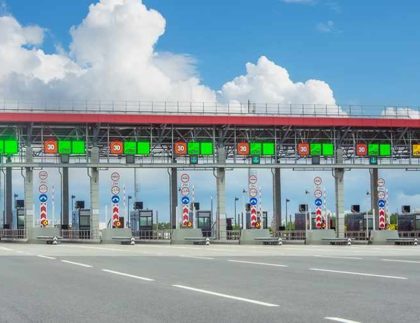

The modern TSL industry, which is a fixed pillar of European economy, is subject to numerous requirements and regulations. Proper transport organization has a large impact on the development of individual countries, as well as the working conditions and safety of drivers and other road traffic participants. In this article, we will discuss one of the most important road transport agreements, that is the AETR Agreement. Who is subject to its provisions and what is their scope of application? Read on to find out!
What is the AETR Agreement?
The AETR Agreement (short for “Accord Européen sur les Transports Routiers”) is an agreement on the several key principles governing international transport. It was adopted in Geneva in 1970.
The AETR Agreement governs the following topics:
- rules for drivers’ employment and working time;
- mandatory rest periods;
- obligations related to tachograph recording of driver activity information;
- frequency and scope of oversight activities by competent bodies.
The AETR Agreement concerns international road transport carried out outside the borders of European Union and European Economic Area member states and on the territory of countries that are signatories of this Agreement – using vehicles registered in these countries.
The AETR Agreement also sets forth the minimum age for a driver – 18 years of age for vehicles with trailers and semi-trailers with a permissible total weight under 7.5 tons and 21 years of age as a standard for other vehicles. According to the Agreement, drivers performing carriage of passengers must also be over 21 years of age.
How does the AETR Agreement regulate working and rest times of drivers?
The AETR stipulates driving time settlement on a weekly and daily basis. Its provisions stipulate that a driver’s weekly driving time cannot exceed 56 hours. At the same time, the total working time during any two consecutive weeks cannot exceed 90 hours.
How does this translate into daily periods? According to Article 6 of the AETR Agreement, a driver’s daily driving time shall be 9 hours and may be extended twice a week – up to 10 hours.
Apart from the above principles regarding daily and weekly vehicle driving time, drivers should know their daily rest time under the provisions of the AETR agreement.
- A 45-minute break is mandatory after four and a half hours of driving. This principle also allows the break to be divided into two parts – one lasting at least 15 minutes and one lasting 30 minutes.
- Daily rest time is 11 hours. The AETR Agreement allows for dividing this rest period into two parts – one of 3 hours and one of 9 hours (in this order).
- Regular weekly rest lasts at least 45 hours and at least 24 hours if reduced. At least two regular rest periods or one regular and one reduced rest period are mandatory during two consecutive weeks. Unused rest hours must be used within three weeks.
- In the case of multi-manning, the rest is 9 hours during a 30-hours period after the end of a rest period, which, in the case of double manning allows each driver to drive for up to 10 hours (twice a week).
What are AETR Agreement regulations on rest on a ferry or train? In such a case, the rest may divided into no more than three parts, while the total driver activity time between these parts cannot exceed 60 minutes. The driver must have access to a bunk or couchette.
In which countries is the AETR Agreement applicable?
The AETR Agreement has been ratified by the following countries: Albania, Andorra, Armenia, Austria, Azerbaijan, Belgium, Bosnia and Herzegovina, Bulgaria, Croatia, Cyprus, Montenegro, the Czech Republic, Denmark, Estonia, Russia, Finland, France, Greece, Georgia, Spain, Northern Ireland, Kazakhstan, Liechtenstein, Lithuania, Luxembourg, Latvia, Macedonia, Malta, Moldova, Monaco, the Netherlands, Germany, Norway, Poland, Portugal, Romania, San Marino, Serbia, Slovakia, Slovenia, Switzerland, Sweden, Tajikistan, Turkey, Turkmenistan, Ukraine, Uzbekistan, Hungary, UK and Italy.
Are AETR provisions uniform in all member states?
Yes, AETR provisions constitute the regulatory framework for all the countries signatory to the Agreement – all countries are required to implement it into their internal legal systems.










